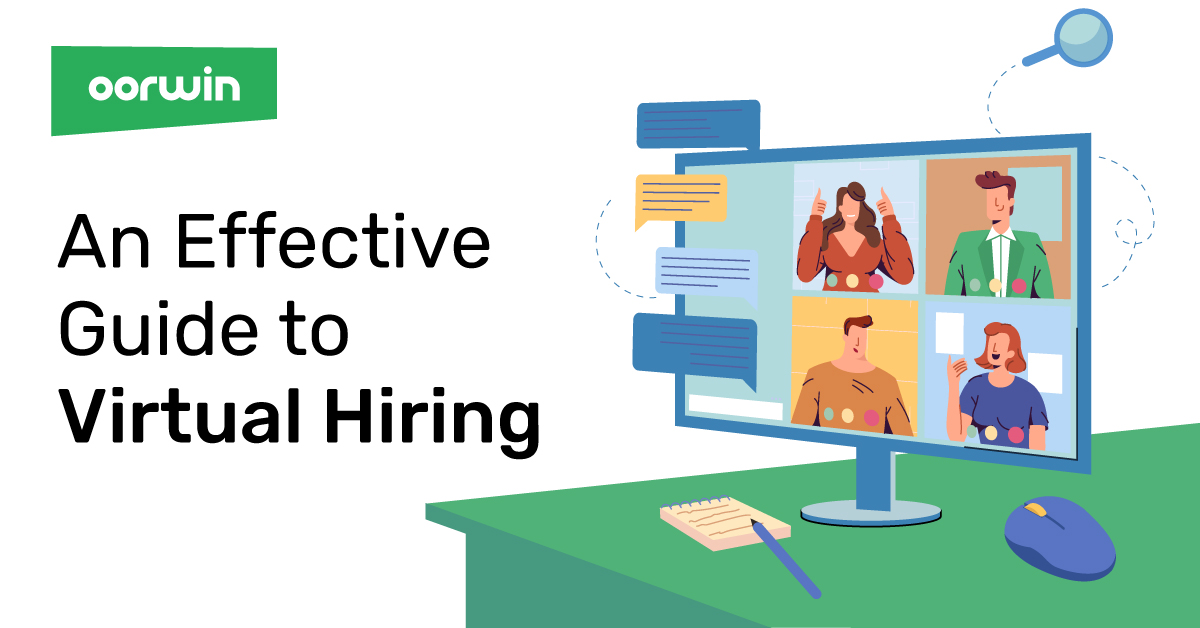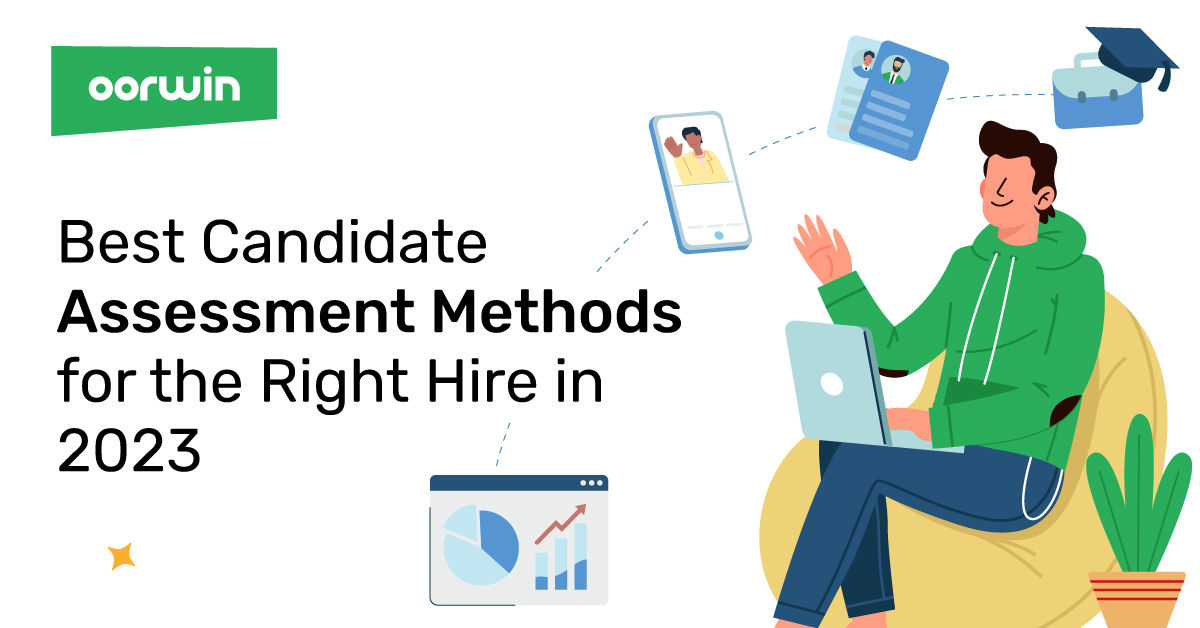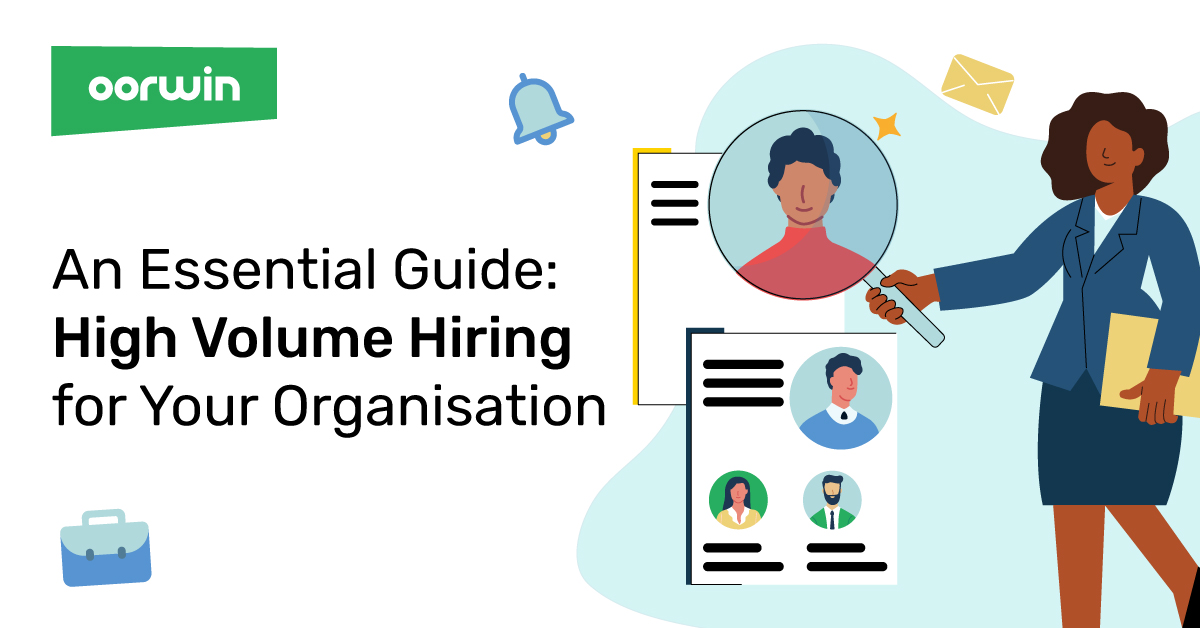Understanding Virtual Hiring and its Best practices to Upscale your Recruiting Process
Talent in a company has a major role to play in its growth. The rapid growth in technology has enabled companies to connect and hire candidates from around the world. Virtual hiring has become a key part of recruitment strategies for many companies in this day and age. It has helped organizations to save a lot more time and resources. Following a few guidelines, virtual hiring could be carried out smoothly and steadily.
Virtual hiring is simply the process of finding and hiring new employees through digital means. It’s a way to do everything a recruiter would normally do in a traditional hiring process, but all online. This could include posting job ads, conducting virtual interviews over video call, and even signing offer letters electronically. With the rise of remote work and the pandemic, virtual hiring has become more popular and is a great way for companies to expand their reach and find top talent from anywhere in the world.
5 Primary Tips for Effective Virtual Hiring
Geographical barriers are not a constraint anymore for tapping the right talent for a
company. Virtual interviews are quite common these days to connect with potential hires for a company. Here are five key tips to make virtual hiring effective.
Creating Compelling Job Ads
Advertisements are a great way to gain people’s attention. However, this task is more complex than it sounds to be. It is important to create ads that reach the maximum audience. Here are a few things which must be kept in mind while creating the job ads.
- Make it SEO friendly
- Tailor it to the company’s needs
- Form an appealing job description
- Include all the attractive points about the organization
Strengthen Company’s Social Media Presence
Social media has never been more powerful than today. It is said that social media is the face of any organization in the modern world. It becomes crucial to maintain an attractive and updated social media. Here are a few tips:
- Do a proper trend analysis
- Stay updated and keep the company’s social media handles active
- Post accurate and real information
- Take measures to engage the audience
Investing in Virtual Recruitment Platform and Equipments
Using the right virtual recruitment platform is an important part of the hiring process for any company. A virtual recruitment platform helps companies in virtual hiring by providing a digital environment for conducting the recruitment process. It allows for remote communication and collaboration between recruiters, hiring managers, and candidates, making it easier to manage the entire hiring process online. No matter how well-qualified the employee is, the experience of visual hiring will be better with a system. Some other reasons why a good virtual recruitment platform is important for any company are:
- Improved and efficient virtual hiring
- Efficient virtual training
- Simplified meetings
- Increased engagements
Widening Search Demographics
It becomes difficult for the targeted audience to find you in such a competitive and cluttered market. One has to understand the search demographics and take measures to widen it. There are five parameters on which demographics are based- gender, occupation, cultural background, and family status. It is important to focus on these parameters to widen the search demographics. It will increase the company’s reach, which will help it to get the most suitable talent.
Having an Onboarding Infrastructure in Place
A smooth and simplified onboarding process makes virtual hiring easy and efficient for the organization and benefits the candidates. Here is a guide to how a company can maintain an efficient onboarding infrastructure:
- Maintain an efficient email system
- Check your devices
- Check the stability of the internet connection
- Inform the candidates about the guidelines well in advance
- Use reliable software to conduct the hiring process
Advantages of Virtual Hiring
There is a reason why probably every company or any business is opting for the virtual hiring process. Some of the major advantages of virtual hiring, which make it so much popular, include:
Saves Cost
Virtual hiring is cost-effective. It not only saves the cost of the employers but also is favorable to the pockets of the candidates as they do not have the hassle of moving to the other city for their interviews.
Flexible Schedule
Another benefit of the virtual hiring process is that the schedule becomes entirely adjustable from both ends. In a physical process, it becomes quite difficult for both interviewer and the candidate to make changes.
Reduces Time to Fill
When it comes to the hiring process, it has generally been witnessed that companies look for immediate joiners to save time and resources. The HR department wants to make the hiring process as short and efficient as possible. It is where virtual hiring plays a crucial role. It helps reduce the time to interview and vet the candidates as there is no commutation involved.
Expands Candidate Pool
Like any other job interview, the uncertainty that one will crack the interview remains even for international hiring processes. Many candidates tend to miss lucrative opportunities as they are unwilling to travel long distances due to this uncertainty. Besides the distance involved, traveling such long distances can also be expensive. Companies have to let go of exceptional talents joining their team just for a geographical barrier. Virtual interviews can be a game-changer where the recruiter can interview a suitable pool of candidates from any part of the world.
Disadvantages of Virtual Hiring
Companies have innumerable benefits when they opt for virtual hiring. Still, they are also prone to many challenges when the process is not followed diligently and with sincerity some of the disadvantages are:
Technology Issues
Technical glitches can ruin a virtual interview. It is important to check whether the devices needed for the interview are working properly. One should also check that the applications through which the interview will be conducted, such as Google Meet or Zoom, are working smoothly or not before the interview. Even after taking drastic precautions, some issues may come up on the interview date.
Can be too Impersonal
One of the most significant ways to show professional behavior in a virtual interview is by sitting in a quiet working environment. But when this environment is not followed, it might get personal and portrays a not-so-good image. Moreover, these distractions might deprive candidates and employers of a better understanding of each other.
Possibility of Junk Resources
There are high chances of the candidates manipulating their qualifications or certificates and even their knowledge during a virtual hiring process.
The same thing can happen in the case of companies as well. Since the candidates are not exposed to the company environment, culture, or employees, the chances of fraud tend to be high.
The Importance of Virtual Hiring Amidst the Changing Work Environment
It has become crucial for companies to modernize their recruitment processes in this era. It can help an organization in saving time, effort, and money. Even candidates benefit from it as the hiring process becomes more flexible. Besides the various benefits, virtual hiring relies too heavily on technology, and challenges can quickly arise. Taking preventive measures can help to avoid last-minute glitches. That’s why, Oorwin offers almost 100+ integrations to cover all the recruiter needs at one place, sign up for a free 7-day trial today to explore efficiency at its best.
Frequently Asked Questions
What is a virtual Hiring Process?
Virtual hiring is the recruitment process conducted through online platforms from the remote locations of the candidate and the recruiter.
What are the strategies for effective virtual recruiting?
Three things are required for a virtual interview to take place smoothly: a stable internet connection, a well-lit quiet area, and a tested device.
How do you organize a virtual hiring event?
One can host a virtual hiring event by sending the candidates an invitation or introducing them to the company’s relevant software for the interview process.






